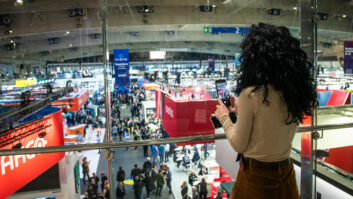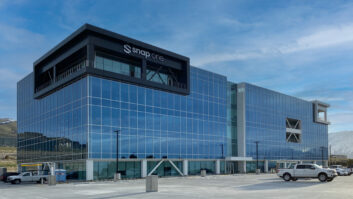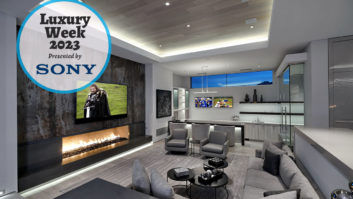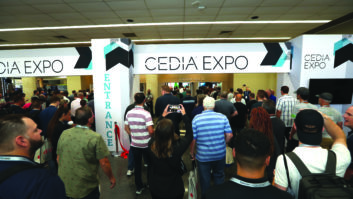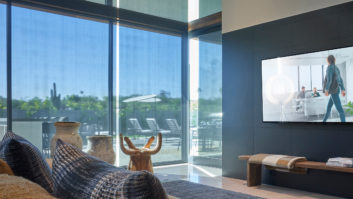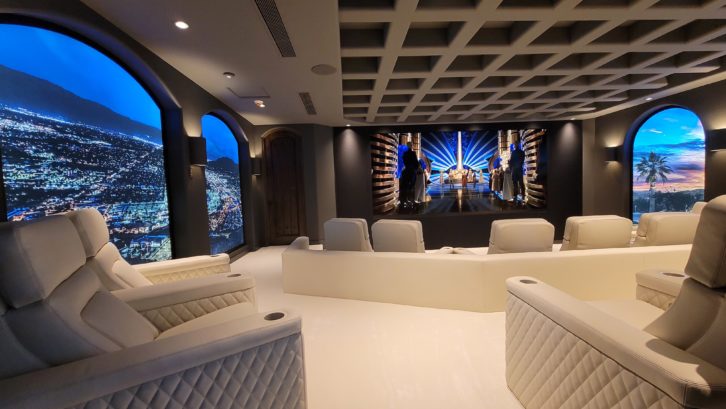
When Sony’s Crystal LED made its custom installation industry debut at CEDIA Expo 2019, the dazzling 4K resolution, 219-inch panel on display turned a lot of heads — and then dropped a lot of jaws with its price. That particular tradeshow setup cost $877,000. As John Sciacca put it in his show wrap-up, “Yowza!”
So, while Crystal LED (or CLED) priced itself out of most homes, it made a name for itself in commercial applications, including corporate showrooms, lobbies, and production facilities such as the reference-level screening room on the Netflix campus in Los Angeles.
Still, Yasin Chaudhry, sales manager for AVIR, Inc., in Palm Desert, CA, was taken with the technology when he experienced it at InfoComm 2018, and when his long-time home theater client asked him what was new in display technology, he was ready with his answer.
“This client has always been interested in technology and upgrades for the theater,” says Chaudhry. “When the home was originally purchased, the first display installed to replace a three-gun projector and a 4×3 screen was a 103-inch Panasonic plasma. Then a few years later we replaced that with a 100-inch Sony 4K TV. Last year the client asked, ‘Is there anything new on the market that I should be considering?’
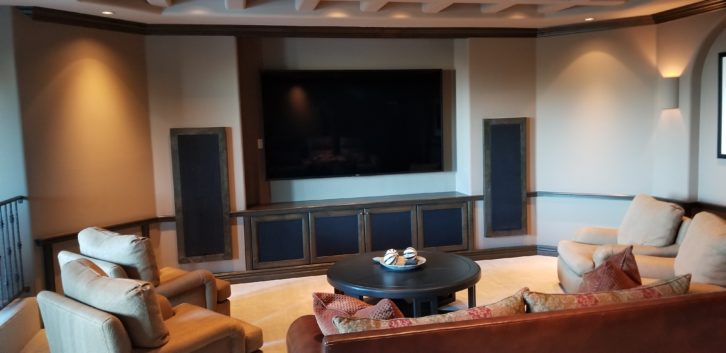
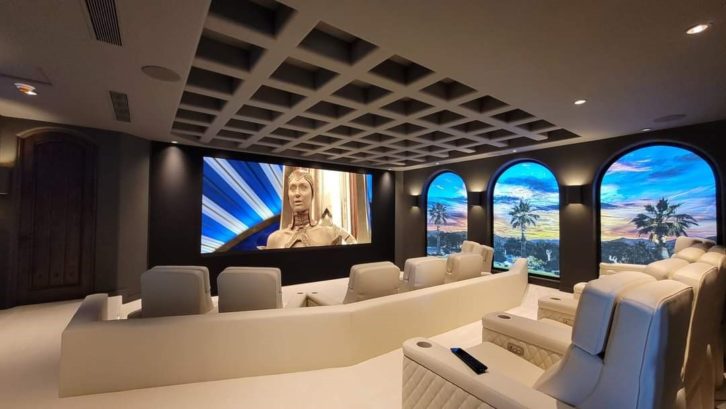
“I explained the CLED technology to him — and cautiously mentioned how wildly expensive it was and what the installation was going to require. We would have to create space behind the screen for service, which meant we’d have redo the room. Plus, I explained that this is a Sony product, and that Sony comes out to install it. I think that that was the key feature for him — it wasn’t something that you could just buy off the shelf and install. This was something that Sony would come out and install and commission for him. That was a huge selling feature for the project.
“I took the client to experience Crystal LED at the DMPC (Digital Motion Production Center) in Glendale. That was it — the client was committed to the project.”
And by committed, Chaudhry means, “he got so excited talking over the possibilities that, to see if there was enough space to install the CLED screen — which needed an additional 54 inches — he grabbed a Skill saw and started cutting into the walls in an adjacent bathroom located behind his current theater.” Fortunately, the wall could be moved to create the needed space, and that’s when it all started.
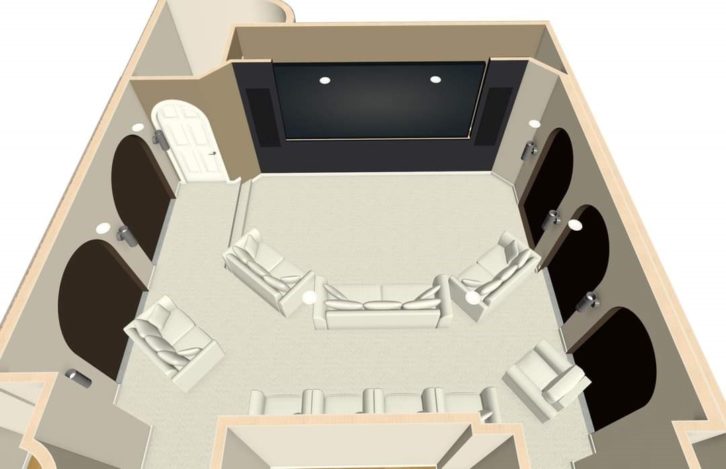
Tearing Down and Building Up
The client’s general contractor, Tom Lathrop of Lathrop Development, Inc., oversaw the demo and reconstruction of the room. “To gain the clearance needed, we had to come into the room one foot for a total of 54 inches from the front of the screen to the back CMU wall,” says Chaudhry. “You have a very comfortable 36 inches behind the CLED to walk around and work within.” Lathrop Construction built the custom niches and provided the necessary tie-in from the CLED frame to the structure of the house. This is an important step to ensure the panels never shift.
The impressive screen is 174 inches diagonal in a 2.35:1 aspect ratio, and is 13.2 feet wide by 6 feet high. The first row of seats, all from Fortress Seating, is 12 feet away from the front of the CLED, with the back seats at 24 feet away from the screen.
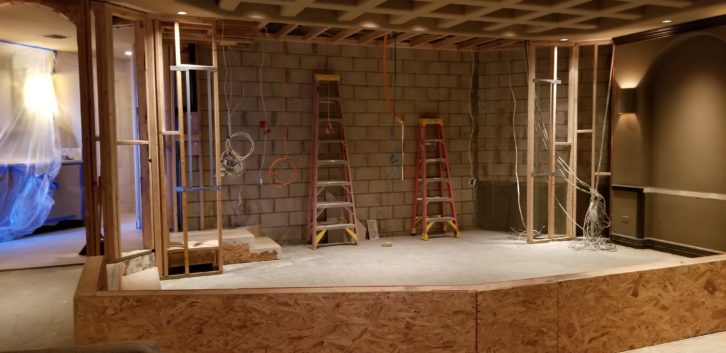
With the room prepped, it was time to bring in Sony.
With so many different divisions of Sony to navigate through, acquiring CLED was not easy — even for a longtime Sony Diamond dealer like AVIR. Since this version of CLED is designed for the commercial market, CI dealers have to be approved to sell it in a residential space.
Once Sony acknowledges that an integration firm fits with the handling of CLED and allows them to sell the product, the integrator begins working with multiple individuals at Sony to help bring the project to fruition. During the design phase, one of the options is to choose between frame manufacturers to work with. For this project, AVIR went with Draper, which offered a more cost-effective solution for the room.
“In pricing CLED product, Sony provides you with an all-in number with options,” says Chaudhry. “So, when you look at the pricing chart, it not only includes the CLED panels and controller, but also includes options on a five-year warranty from Sony (you can choose the level of service you want to purchase), the frame, the frame installation, and the CLED installation, plus the calibration and commissioning.
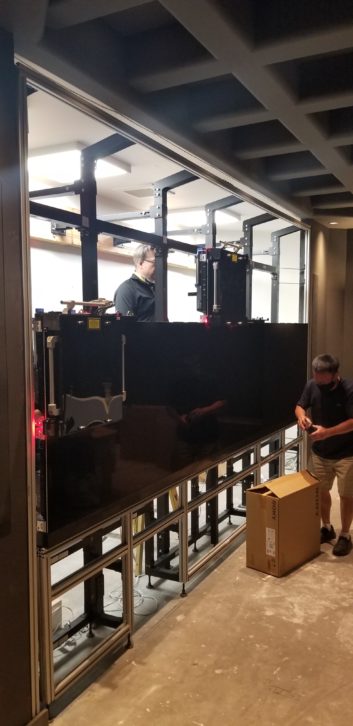
“During the installation process, I could not have asked for a better partner to work with than Sony. The guys that they send out are industry people; they get things done very quickly. There were no major issues from start to finish.”
That’s not to say that there weren’t any kinks along the way, especially with this being one of the first CLED residential installations ever. When video walls such as this are installed in commercial spaces, there are typically lots of “hands-on-deck” to handle moving the multitude of boxes around. In a residential space, the delivery people drop everything off in the driveway, and you have to take it from there — 2200 pounds, +100 boxes later, everything was carried around the house and down two flights of stairs in the middle of a SoCal summer.
Being the first residential installation for Sony, their team was not used to specifying a scaler for installation projects. For past commercial deployments, entities such as Amazon, Apple, and others have engineering teams that design content and choose the correct product to fit the specific application. For AVIR, being an early adopter also meant being the standards-setter and having to choose the best fit for the client’s needs.
Chris Bowden, AVIR’s engineer and lead installer for this project, decided on the Lumagen Radiance scaler and a Tributaries Vega fiber optic cable. Additionally, he added a computer, monitor, and keyboard in the back room attached to the screen. “Should it be needed in the future, Chris wanted to be able to run the calibration software for the CLED panels,” says Chaudhry.
Power for the CLED is provided by three 20-amp 208V circuits with break out cables from the L6-20 cored caps. AVIR also added an air conditioning unit to the back room to keep the temperature below 82 degrees F.
Room with a View
As captivating as the screen is, this home theater offers something no matter which direction you look — from the custom Rolls Royce-inspired Fortress Seating, to the waffle ceiling that was an original architectural design of the room, to the unique wall niches on either side of the space.
“The client tasked me with capturing imagery that replicates the positioning of his home,” says Chaudhry. “The images I shot, and that you see in the side niches, place the ‘windows’ northeast and southwest. On the left of the client’s house, there’s a hiking trail that overlooks the desert. I captured this view at sunrise over the desert floor. This would be the same ‘down valley’ view you would see from the client’s patio. On the other side, it looks ‘up valley.’ There are three palm trees in front of the community’s clubhouse, and the client asked me to capture these at sunset.
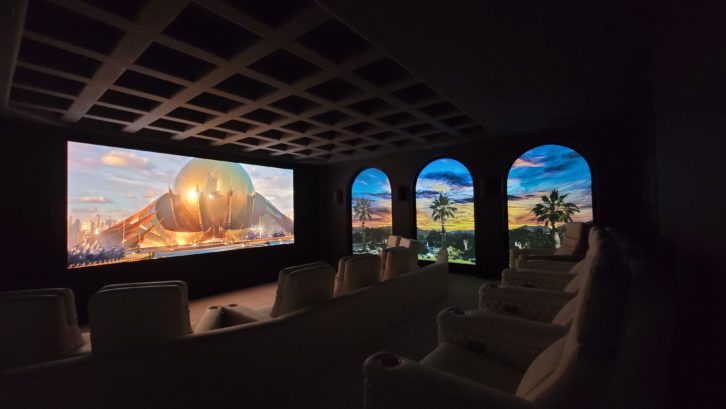
“We had the images on printed on screens and then backlit them with dimmable LED lights to replicate the views seen from outside.”
The side niches and lights, like the rest of the theater, are controlled by Crestron. Using the remote, the client can re-create sunrise or sunset in the room by dimming one side more than the other side. They fade down to solid black for when the client is watching a movie.
On the audio side, the client had a 7.1-channel system that he was originally inclined to leave in the room despite the upgrade in screen technology. However, since the CLED was installed, he has decided to upgrade to a Dolby Atmos system that AVIR is now installing for him using Wisdom Audio speakers, JL Audio subs, and McIntosh amplification and processing.
Step Into My TV
With a hefty price tag and technology that has, up until now, been solely used for commercial facilities, client expectations were high. Fortunately, both the Crystal LED and AVIR managed to meet it. “The client is very happy,” says Chaudhry. “The biggest kick he gets out of this is asking people if they want to see the inside of his TV, and then he walks them around the corner and opens up the door to show them the back of the CLED, which is just as amazing as the front! It’s definitely the talk of the town — or at least the community that he’s in.”

With his first one behind him, Chaudhry sees more CLED projects in AVIR’s future. “Sony has brought us into new conversations regarding their new CLED B and C series, which is designed to be residential-integrator friendly,” he says. “By contrast, it is pretty much a ‘lick and stick’ product. You don’t need any space behind it; the new frame is a series of vertical and horizontal supports that screw directly to the wall, and the CLED panels attach directly to that structure. All said, this first installation is still utilizing Sony’s best CLED product — similar to what they use to master movies with— offering a top-of-the line, studio-quality home theater experience.
“I’m currently drafting 3D renderings for two other CLED rooms as well as other theater design projects, but have had to slow down because of ongoing discussions with Sony regarding new and emerging equipment and technologies.”
With the technological changes and improvements to Crystal LED, along with price changes, AVIR will continue working with Sony to help navigate the path to more residential CLED installations in the future.
AVIR CLED Install At-A-Glance
Crew:
- Mike Oster, Gordon Spielberg owners, AVIR
- Yasin Chaudhry, sales and design at AVIR
- Chris Bowden, lead engineer and installation, AVIR
- Tom Lathrop, Lathrop Development, Inc., general contractor
- Sony team: Neal Manowitz, Jeff Goldstein, Jason Metcalfe, Jayson Savage, John Garmendi, and Steve Banaszek
- AVIR/Sony Area sales rep. Darren Kolotyluk with Morris Tait
- Jose Vasquez-Vintage Cabinets for the custom surround and frame-work
Gear Notes:
- Screen Size: 174 inches diagonal; 13.2 feet wide 6 feet high 40 cabinets
- Power for the Sony CLED: Three 20 amp 208V (two hots and a ground) circuits with break out cables from the L6-20 cored caps
- Fortress Seating
- Wisdom Audio speakers: L8i L/R P6i C—4 x P4i in-wall speakers and 4 x ICs7 in-ceiling speakers—2 x JL Audio Fathom 12 subs
- McIntosh Audio MX123 processor; MC312, MM8077, M1254 amplifiers
- Sources: Kaleidescape, DirecTV, Roku, Apple TV, Sony 4K DVD player
- Processing: Wisdom SC3 for Dirac calibration and a Lumagen Radiance for video scaling
- Control Crestron CP3 and TSR310 remote
- Design, build, commission time: 2/15/20-10/31/20


